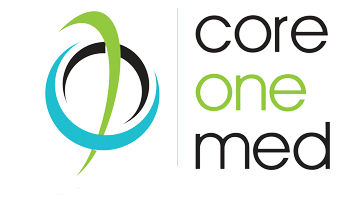Medical Billing In-House vs. Outsourced: A Practitioner's Financial Reality Check
The Numbers Don’t Lie (And Neither Do Your Bank Statements)
The $127,000 Question Every Practice Owner Asks
Dr. Steven T. stared at her monthly expenses spreadsheet. Again. The billing department was eating up $127,000 annually, yet claim denials kept climbing. Sound familiar?
You’re not alone in this struggle. Most practice owners face this exact moment – wondering if their billing setup actually makes financial sense.
Let’s break down the real costs. No fluff. Just facts.
What In-House Billing ACTUALLY Costs You
Here’s what most practices don’t calculate properly:
Direct Staffing Costs:
- Billing manager: $65,000/year
- Two billing specialists: $45,000 each
- Benefits and taxes: Add 30%
- Total: $201,500 annually
But wait. There’s more hiding in your budget.
Hidden Expenses That Sneak Up:
- Software licenses: $8,000-15,000/year
- Training and certifications: $3,000/year
- Office space allocation: $12,000/year
- Equipment and IT support: $5,000/year
Your “cheap” in-house solution? It’s costing around $230,000 yearly.
The Outsourcing Math That Changes Everything
Professional billing companies typically charge 4-8% of collections. Let’s use real numbers.
Practice collecting $2 million annually
- Outsourcing cost at 6%: $120,000/year
- Your current in-house cost: $230,000/year
- Annual savings: $110,000
That’s enough to hire another provider. Or take that vacation you’ve been postponing since 2019.
Performance Metrics: Where the Rubber Meets the Road
Metric
In-House Average
Outsourced Average
Days in A/R
45-60 days
28-35 days
Clean claim rate
85-90%
95-98%
Clean claim rate
92-95%
97-99%
Denial rate
8-12%
2-4%
The difference? Cash flow that actually flows.
Real Practice Stories (Because Numbers Need Context)
Case #1: Family Practice in Ohio
- 3-doctor practice
- Switched to Core One Med after struggling with denials
- Result: 23% increase in collections within 6 months
- Extra revenue: $180,000 annually
Case #2: Orthopedic Group in Texas
- 5-surgeon practice
- In-house billing cost: $340,000/year
- Outsourcing cost: $195,000/year
- Time saved: 15 hours/week for practice manager
Case #3: Cardiology Practice in Florida
- Single-doctor practice
- Revenue cycle time dropped from 52 days to 31 days
- Freed up $85,000 in working capital
The Staffing Headache Nobody Talks About
Managing billing staff is… challenging. Here’s what practice owners really deal with:
- Turnover rates: 40% annually in medical billing
- Training time: 3-6 months to get new hires productive
- Sick days and vacations: Your A/R doesn't pause
- Keeping up with regulations: Someone has to stay current
Sarah (remember her?) spent 12 hours last month just interviewing billing candidates. That’s 12 hours not seeing patients.
Step Three: WhaTechnology: The Great Equalizer t If You Still Can’t Pay?
In-house teams often work with outdated software. Why? Upgrading costs money. And time. And training.
Professional billing companies invest millions in technology. They have to – it’s their competitive advantage.
What you get with professional services:
- Latest billing software (updated automatically)
- AI-powered claim scrubbing
- Real-time reporting dashboards
- Integration with your practice management system
The Financial Reality
The math is clear. In-house billing costs more than most practices realize. Way more.
But cost is just one piece of the puzzle. What about control? Quality? Relationships with patients?
Beyond the Balance Sheet (The Human Side of Billing Decisions)
The Control Myth That Costs You Sleep
“I need control over my billing.” Every practice owner says this. But what does control actually mean?
Real control means:
- Getting paid faster
- Having fewer claim denials
- Spending time on patient care
- Sleeping well at night
Not checking if Jenny remembered to submit yesterday’s claims.
Patient Experience: What Really Matters
Here’s a surprise: Patients prefer professional billing.
Why? They get consistent, knowledgeable service. Not Jenny’s cousin who just started last week.
Patient complaints drop significantly with professional billing:
- Faster response to billing questions
- Clearer explanation of benefits
- More payment options
- Better insurance verification
One patient told Dr. Steven T.: “Your new billing company actually knows what they’re talking about.”
The Expertise Gap That's Costing You Money
Medical billing changes constantly. ICD-10 updates. Medicare rule changes. Prior authorization requirements.
Your in-house team juggles billing with… everything else. Professional billing companies? This is ALL they do.
Core One Med’s team processes over 50,000 claims monthly. That’s experience you can’t build in-house.
Performance Metrics: Where the Rubber Meets the Road
Let’s talk about what “good” billing actually looks like:
First-Pass Resolution Rate
Appeal Success Rate
Compliance Audit Results
In-house average: 78%
In-house average: 45%
In-house practices: 23% have major findings
Professional average: 92%
Professional average: 78%
Professionally managed: 3% have major findings
The Scalability Problem
Your practice is growing. (Congratulations!) But can your billing keep up?
In-house scaling challenges
- Hiring lag time: 2-3 months
- Training period: Another 3-6 months
- Workspace limitations
- System capacity issues
Risk Management: The Insurance You Didn't Know You Needed
Billing errors create liability. Big liability.
Common risks with in-house billing:
- HIPAA violations (average fine: $1.85 million)
- Billing fraud accusations
- Audit penalties
- Lost documentation
Professional companies carry insurance. They have compliance officers. They follow protocols religiously.
Because it’s their business to get it right.
The Transition: Easier Than You Think
“But switching sounds complicated…”
It doesn’t have to be. Here’s how smooth transitions actually work:
- Week 1-2: Data migration and system setup
- Week 3: Parallel processing (both systems running)
- Week 4: Full transition
- Ongoing: Regular performance reviews
- Core One Med handled Dr. Steven's transition in 18 days. No revenue interruption.
Professional billing scales instantly. More patients? No problem. New location? Already handled.
Making the Decision: Your Action Plan
Step 1: Calculate Your True Costs
Add up everything. Salaries, benefits, software, space, training, management time.
Step 2: Assess Your Performance
What's your days in A/R? Collection rate? Denial rate? Be honest.
Step 3: Consider Your Growth Plans
Where will you be in 3 years? Can your current billing support that?
Step 4: Evaluate Your Risk
How comfortable are you with compliance? What happens if your billing manager leaves?
The Verdict: What the Numbers Really Say
Dr. Steven made the switch. Six months later:
- Collections up 18%
- Days in A/R down 40%
- Patient complaints down 67%
- Her stress level? "I actually sleep now."
Professional billing scales instantly. More patients? No problem. New location? Already handled.
Final Thoughts: It's About More Than Money
Yes, outsourcing often costs less. But the real value? Getting your time back.
Time to see patients. Time to grow your practice. Time for life outside medicine.
The financial reality check? Professional billing pays for itself. Everything else is profit.
Ready to run your own numbers? Contact Core One Med for a free billing analysis. No obligation. Just facts.
Quick Comparison Table
Factor
In-House
Outsourced
Annual cost
$200,000+
4-8% of collections
Setup time
3-6 months
2-3 weeks
Scalability
Limited
Unlimited
Risk exposure
High
Minimal
Technology
Your investment
Included
Expertise
Limited
Specialized
The choice is yours. But now you have the real numbers to make it.









